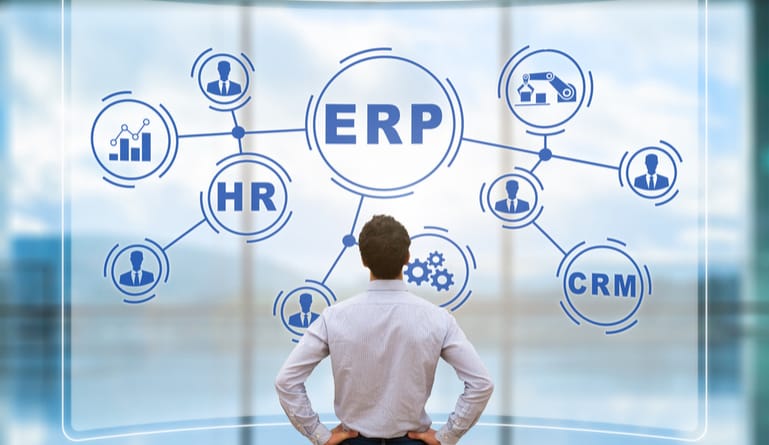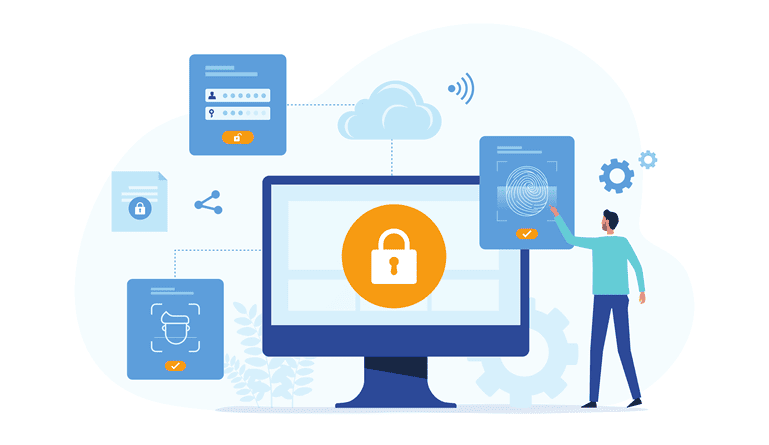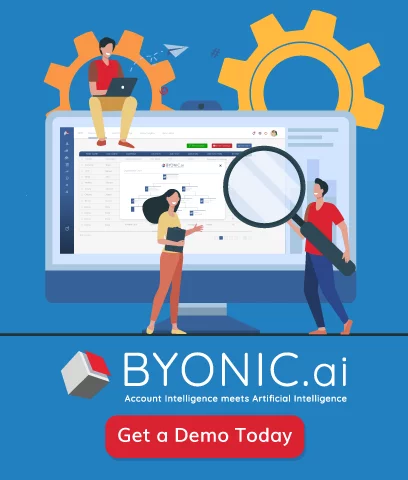One of the biggest obstacles that companies often face is integrating their ERP systems with other existing enterprise applications to meet the demands of a growing business. While ERPs are comprised of complex frameworks, it’s important to keep in mind that they are built on a comprehensive database that is meant to share information across an organization or company.
An integrated ERP essentially means that the ERP is programmed to provide optimizations to processes by interconnecting the many applications within a business. There are many benefits that an integrated ERP system can bring to your organization—the most important being that it can streamline many important and critical business processes and create a more efficient workflow between the many functionalities and departments.
Some of the basic features of an integrated ERP include accounting and financial, project management, customer relationship management, supply chain management, and human resources. If you are looking to apply this technology to your company, here are the various types of enterprise application integration tools for ERP.
Information Management Tools
Information management tools can help establish workflow across different departments and functions within the company. Some great examples of these tools are MongoDB, Couchbase, and MySQL. These tools can help store and transfer large amounts of data across various platforms. More information about each is below:
- MongoDB is a “free and open-source cross-platform document-oriented database program.” It is a “document database with the scalability and flexibility that you want with the querying and indexing that you need.”
- Couchbase is another open source database option. It is “the world’s first Engagement Database” and is aimed at helping to “deliver ever-richer and ever more personalized customer and employee experiences.”
- MySQL is, perhaps, the most widely used database management system on the internet. It, too, is open source and uses Structured Query Language (SQL) “for adding, accessing and managing content in a database. It is most noted for its quick processing, proven reliability, ease, and flexibility of use.”
Reporting and Dashboard Tools
Reporting and dashboard tools are important integration modules because they are essential in facilitating report generation from a management and department level. These tools are usually available in dashboard forms that provide important information such as real-time and other data. Their customizable features make them easy to use and digestible. Some of the most used reporting and dashboard tools include the following:
- Tableau is a business intelligence software that claims to “help anyone see and understand their data.” The program can “connect to almost any database, drag and drop to create visualizations, and share with a click.”
- Microsoft Power BI is a business analytics tool that promises to help you “see your company’s data in new ways with interactive data visualization tools.”
- Google Data Studio is a web service that provides “interactive dashboards and engaging reports that inspire smarter business decisions.” If you use other Google products, you can “easily connect your data from spreadsheets, Analytics, Google Ads, Google BigQuery, and more.”
Process Integration Systems
Integration solutions can help integrate various systems that weren’t designed to work together. They are also able to accommodate various elements of IT and integrate across a wide range of scope. Here are some of the top leading brands in the market:
- SAP XI
SAP’s XI is great for connecting SAP systems with each other and with non-SAP products. It can provide an integrated workflow engine that gives systems the ability to define adapters to non-XML protocols and mappings to convert data content from the source to target format. This is very useful for companies that are looking to revamp their business from top to bottom. One of XI’s best features is its ability to import standard integration content.
- BizTalk
BizTalk is a business process management (BPM) server that allows businesses to automate and optimize their business processes. It provides businesses with powerful tools that can help design, develop, and deploy those processes.
- Web Methods
Web Methods was one of the forerunners who realized the potential of XML interactions. They brought together one of the first generations of XML-based B2B integration software to the market before 2000. Since then, they have expanded their business to include enterprise application integration and electronic data interchange. They have earned the reputation of being one of the most comprehensive and easy-to-use integration suites on the market.
- Dell Boomi
The Boomi AtomSphere integration platform-as-a-service is a 100% cloud-based system. Some of its state of the art features include cloud-to-cloud, cloud-to-on-premises, on-premises-to-on-premises, and B2B integration. This system supports real-time integration and elastically scales to meet high-volume needs on various environments such as mobile, batch, and EDI. IT can be easily accessed on a browser and can deliver a range of integration as well as API and data management.
Enterprise infrastructure and application integration are increasingly becoming a mission-critical concern. A wide range of approaches and methodologies are aimed at helping companies achieve that goal. If you are looking to integrate your ERP system, these tools can help you do a cost-effective comparison analysis and evaluate the tool that is right for you.





